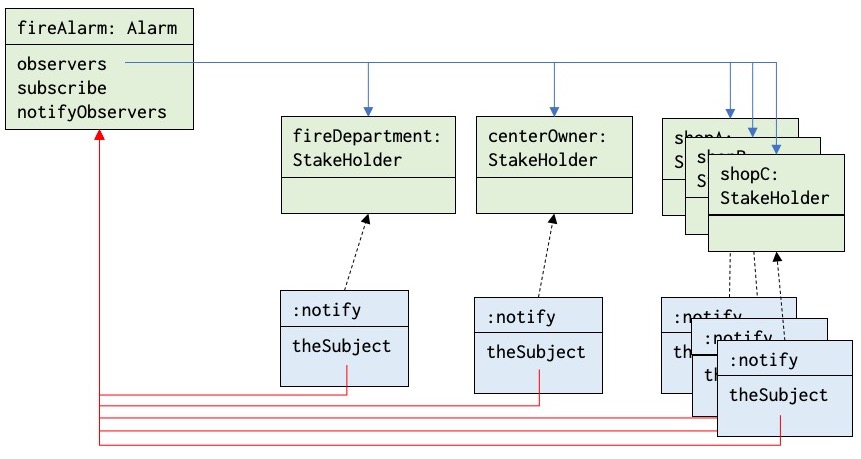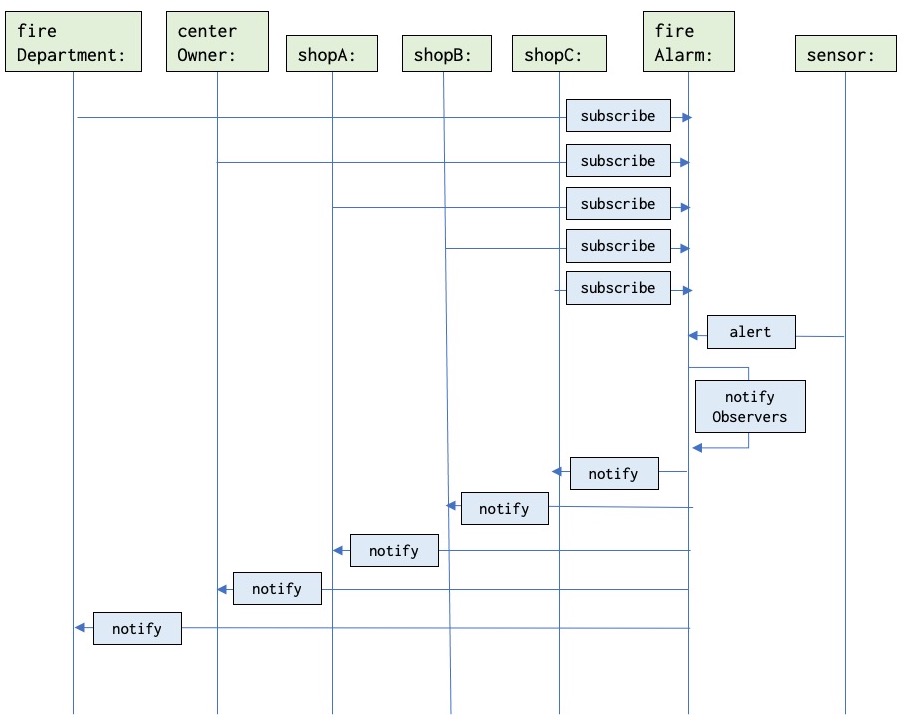The fire alarm is represented by an object of class Alarm, a subclass of Subject. The fire department, center owner, and shops are represented by instances of class Stakeholder which in turn is a subclass of Observer.
class Alarm(id: var String): Subject
whatWentWrong:
" - smoke detected\n".print
alert:
notifyObservers
class Stakeholder(id: var String): Observer
ObservedSubject::< Alarm
notify::
theSubject.whatWentWrong
fireAlarm.subscribe(this(StakeHolder))
fireAlarm: obj Alarm("fireAlarm")
fireDepartment: obj Stakeholder("FireDepartment")
centerOwner: obj Stakeholder("CenterOwner")
shopA: obj StakeHolder("ShopA")
shopB: obj StakeHolder("ShopB")
shopC: obj StakeHolder("ShopC")- Class
Alarmhas anididentifying the alarm. - It has a method
whatWentWrongthat may supply information to anObserverwhen notified. - It has a method
alertthat is invoked by a fire censor in case a fire is detected. - Class
StakeHolderis a subclass ofObserver. - It has an
ididentifying theObserver. - It makes further binding of
notify, which invokestheSubject.whatWentWrong. - It makes a further binding of class
ObservedSubjecttoAlarm. - Note that
theSubject(the parameter ofnotify) is of typeObservedSubject, and since it is bound toAlarm, the methodwhatWentWrongmay be invoked. - It invokes
fireAlarm.subscribe(this(StakeHolder))and thereby subscribe to events fromfireAlarm. - The object
fireAlarmis declared as an instance of classAlarm. - The
ObserverobjectsFireDepartment, etc. are declared as instances of classStakeholder.
The next diagram illustrates the situation where the subject fireAlarm has references to all the Observers, and the argument, theSubject of invocations of notify on an Observer refers to the fireAlarm object.

When the Stakeholder objects are generated, they all subscribe to events from the fireAlarm. At some point in time an external sensor may detect a possible fire and invoke fireAlarm.alert, which then invokes notifyObservers, which in turn invoke notify on all Stakeholder objects. This is illustrated by the following OSD.

The invocations of notify all invoke whatWentWong on the FireAlarm, but this is not shown in the above diagram.
In the above example, the FireAlarm is the only subject being observed. It is of course possible to add more FireAlarm objects at different places in the shopping center or at other locations. The FireDepartment will then observe all the FireAlarms whereas the shops and owner of a given shopping center only observe the alarm in that center.
